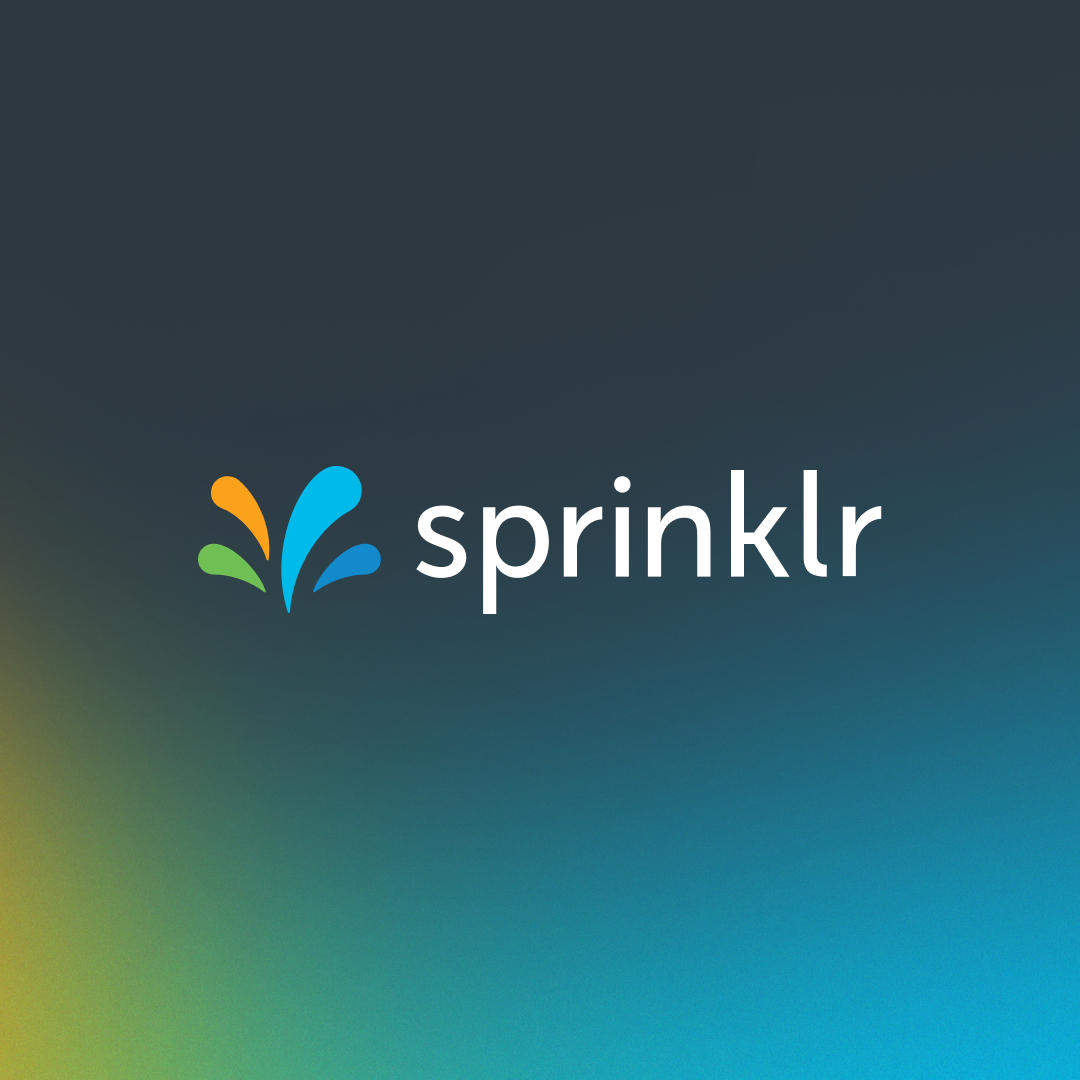The undisputed leader in social media management
For over a decade, the world’s largest enterprises have trusted Sprinklr Social for its in-depth listening, unmatched channel coverage, enterprise-grade configurability and industry-defining AI.

Top LinkedIn Demographics Statistics for 2025
The success of any channel-specific campaign hinges on one crucial element: your understanding of the target audience using that platform. When it comes to LinkedIn — the world's largest professional networking site — understanding LinkedIn demographics is essential for effective marketing.
Whether you're a beginner planning to leverage LinkedIn as a marketing channel or a seasoned professional looking to sharpen your LinkedIn marketing strategy, this blog is your go-to resource. We'll delve into crucial LinkedIn demographics stats and provide actionable pro tips on crafting campaigns that resonate with each segment. Let's roll.
- Why are LinkedIn demographics important for B2B marketers?
- Overview of LinkedIn’s global reach
- Age distribution Stats on LinkedIn
- Gender composition on LinkedIn
- Geographic distribution of LinkedIn users
- LinkedIn income demographics
- Career level demographics of LinkedIn users
- How can you use LinkedIn analytics to find your audience demographics
- Know your audience, master your LinkedIn marketing
Why are LinkedIn demographics important for B2B marketers?
LinkedIn demographics offer a detailed breakdown of the platform’s user base, providing insights into characteristics such as age, gender, location, and profession. This user-based analytics helps marketers understand their audience granularly, enabling more effective and targeted advertising campaigns.
According to LinkedIn, enterprises using LinkedIn advertising see twice the engagement rate, up to 13.5% lower cost per acquisition and up to twice the conversion rates compared to other platforms.
Here are more ways how LinkedIn demographics knowledge helps your LinkedIn marketing campaigns:
Impeccable customer segmentation: Knowing LinkedIn demographics helps you segment customers more effectively, resulting in highly personalized and relevant engagement that resonates with your audience.
Better targeting: By categorizing LinkedIn demographics into different segments, you can identify high-intent and high-value accounts worthy of your engagement efforts.
Personalization: When did you last read a message or email that didn’t address you by name? And how quickly did you delete it? Understanding LinkedIn demographics helps you maintain a human touch in your outreach, making your messages more engaging and personalized.
Trend forecasting: LinkedIn demographic data keeps you updated on your audience’s evolving tastes and preferences. This ensures your outreach activities remain timely and relevant, regardless of shifting trends.
Efficient outreach: Clearly defined ideal customer profiles (ICPs) and personalized outreach are almost always worth the investment. Understanding LinkedIn demographics enables you to craft outreach campaigns that reflect positively on your campaign dashboard.
Overview of LinkedIn’s global reach
LinkedIn's global reach spans industries, connecting professionals from every corner of the globe. Over time, this number has grown exponentially.
- In 2022 LinkedIn had 571 million users globally, with 174 million premium subscriptions. In the US only, there are 200 million users. (Source: Statista)
- The platform's user base is expected to grow by 22.3% between 2024 and 2028, reaching an estimated 942.84 million users by 2028. (Source: Statista)
LinkedIn's global user base, which has now surpassed 1 billion members across 200 countries, is a testament to the platform's diversity and inclusivity. This active user base and the growing number of premium subscribers reflect robust followership and engagement.
While this vast user base unlocks a wealth of opportunities, navigating such a large pool of users necessitates a deep understanding of demographics. These demographics serve as the filters, allowing marketers to reach their target audience precisely.
Age distribution Stats on LinkedIn
LinkedIn continues to be dominated by young professionals. Here are some key stats from Statista.
- Millennials make up a significant portion of LinkedIn's user base in the United States at 47%, Generation Z users are comparatively lower at 29%. Additionally, almost one in ten U.S. users were Baby boomers. (Source: Statista)
- In April 2024, a staggering 50.6% of LinkedIn users globally were aged between 25 and 34, with those over 55 making up just 3.8% of the audience. The 18 to 24-year age group represented 24.5% of the user base in 2024. (Source: Statista)
📌 What does it mean for marketers
Embrace digital fluency: Millennials and Gen Z are known for their comfort with technology and social media. This means they are more likely to engage with visually appealing, interactive and easily shareable content. So, create content like videos, infographics and interactive posts to capture their attention.
Tailor content to interests: Millennials value authenticity and professional growth. Tailor your content to address their career aspirations, provide insights into industry trends and offer tips for professional development through webinars, online courses and live workshops.
Utilize targeted campaigns: While LinkedIn doesn’t provide direct age demographics, you can estimate ages by considering job titles, location, industry and experience. Seniority often correlates with age. When composing LinkedIn ads, target users based on job titles, seniority and years of experience.
Read More: Social Media Demographics Every Marketer Must Know in 2023 and Beyond
Gender composition on LinkedIn
LinkedIn fosters professional connections across all industries. Understanding the platform's gender makeup is crucial for B2B social media marketing.
According to Statista, as of January 2024, over 43% of LinkedIn users worldwide were women. The professional social networking platform, which had an audience of over 220 million users in the United States, reported that over 56 percent of its audience was composed of male users in the examined period.
Also, as per a report by DataReportal,
- For the 18-24-year-old LinkedIn advertising audience, the male-to-female ratio is 9.4% to 11.7%.
- For the 25-34-year-old LinkedIn advertising audience, the male-to-female ratio is 24.5% to 31.3%.
- For the 35-54-year-old LinkedIn advertising audience, the male-to-female ratio is 8.4% to 11.7%.
- Statista also reports that "she/they" and "he/they" are the most common pronouns on LinkedIn, followed by other pronouns.
📌 What does it mean for marketers
Inclusive campaigns: Statista's report on pronouns highlights the growing importance of gender-inclusive language on LinkedIn.
- Use gender-neutral language (they/them, themself) whenever possible.
- Avoid assuming someone's gender based on their name.
- Consider offering pronoun selection options in your LinkedIn lead forms.
Diversifying your content strategy:
- Feature success stories and thought leadership content from women in your industry.
- Showcase company culture and initiatives that promote gender equality.
- Consider using a mix of male and female voices in your LinkedIn content.

Geographic distribution of LinkedIn users
LinkedIn has over 343 million members in the Asia-Pacific region, followed by Europe with more than 314 million and North America with 266 million plus memberships. With established US and European markets, the platform has seen rapid growth in the Asia-Pacific region with rising activity in Latin America, UAE and South Africa.
- The platform has the highest audience reach in the US at 230 million, followed by India at 130 million. (Source: Statista)
- The top 5 countries in terms of audience are the US, India, China, Brazil and the UK.
- In 2024, LinkedIn advertising had the highest audience reach in the Cayman Islands, at 115.6% and in Bermuda, at 111.6%. (Source: Statista)
📌 What does it mean for marketers
Prioritize local nuances: While targeting a global audience, consider adapting your content and messaging to resonate with local preferences and business cultures. This could involve:
- Language localization: Translate key content into relevant languages.
- Culturally sensitive visuals: Use visuals that are appropriate for your target market.
- Time zone considerations: Schedule your content to reach professionals during their working hours in different regions.
Leverage location targeting: LinkedIn's advertising platform allows for precise targeting based on user location. Utilize this feature to reach professionals in specific countries or regions relevant to your business.
Consider the "network effect": The high audience reach in established markets like the US and India translates to a powerful network effect. Partnering with local businesses or influencers in these regions can amplify your brand presence.
Must Read: Social Media Reach vs. Impressions: What's the Difference?
LinkedIn income demographics
LinkedIn attracts users across different income levels. However, data suggests a more significant representation of high-income and high-education households. A few additional LinkedIn audience demographics show:
- In the US region, 53% of users are in the high-income category, 29% in middle-income households and 16% in low-income ones. (Source: Statista)
- LinkedIn is a bustling business hub, with a staggering 65 million making their mark on the platform.
- 44% of LinkedIn users take home more than $75,000 per year.
📌 What does it mean for marketers
Targeting high-value customers: LinkedIn offers a rich pool of professionals with high purchasing power. This presents a significant opportunity for B2B marketers to target high-value customers.
- Focus on ROI: Highlight the return on investment (ROI) your products or services can deliver.
- Premium content & features: Consider offering premium content or features that cater to the needs of decision-makers and influencers.
- Showcase success stories: Feature success stories with clients in high-growth industries or those dealing with similar challenges your target audience faces.
Content strategy tailored for professionals: Since LinkedIn users are predominantly professionals, tailor your content strategy to resonate with their needs and interests.
- Professional tone: Maintain a professional tone and brand image in all your LinkedIn communications.
- Data-driven content: To enhance credibility, back up your claims with data and statistics.
- Thought leadership content: Establish your brand as a thought leader on LinkedIn by sharing valuable insights and expertise.

Bonus Read: How to Create a Content Marketing Strategy (+ Additional Tips)
Career level demographics of LinkedIn users
LinkedIn has become one of the most popular platforms for recruiters and headhunters to hire the right candidates for their companies over the years. Here are a few stats that justify the trend.
- 49 million people search for jobs on LinkedIn each week.
- LinkedIn boasts three million members with MBAs, 10 million C-level executives, 17 million thought leaders, 63 million decision-makers and over 90 million senior-level executives. (Source: FinancesOnline)
- There are over 63 million decision-makers on LinkedIn. 10 million are C-level executives, with 180 million senior-level influencers. (Source: LinkedIn)
💡 Pro Tip: Have you considered leveraging the power of LinkedIn groups to establish yourself as a thought leader in your industry? Search for active groups in your industry on the platform and participate by sharing valuable content and answering questions. Engage with interested members through direct messages and offer pro bono consultations.
📌 What does it mean for marketers
Leverage employee advocacy: The platform has a large pool of senior-level professionals, making employee advocacy a powerful tool.
- Encourage employee sharing: Encourage your employees to share company content and news on their LinkedIn profiles.
- Employee recognition programs: Implement employee recognition programs that incentivize sharing company achievements and thought leadership content.
Showcase company culture: LinkedIn is a great platform to showcase your company culture and attract top talent.
- Post employee testimonials: Share positive employee testimonials about your company culture and work environment.
- Highlight career growth opportunities: Showcase opportunities for professional development and career growth within your organization.


How can you use LinkedIn analytics to find your audience demographics
Now that you understand the LinkedIn landscape, what's next? Let's delve into using LinkedIn analytics to discover your audience's demographics.
LinkedIn audience insights are available through Campaign Manager:
- Head over to LinkedIn Campaign Manager and sign in using your credentials.
- There are two ways to leverage LinkedIn Audience Insights:
- Matched Audiences: These are pre-built audiences based on your uploaded data (e.g., email lists) or website visitors.
- Saved Audiences: Here, you can build customized audiences using various targeting criteria (e.g., job titles, companies).
- Once your audience is created (matched or saved), find the three dots next to its name and click "Insights."
- Dive into five key categories: demographics, content, companies, groups and education.
- Use your insight to refine your audience targeting using "Edit" and reach the right group.
- Toggle over the demographic information, such as job title, location, industry, seniority and company size, to see the breakdown of your audience. The top five results will be displayed for each category.
On your company page:
- Go to your LinkedIn company page.
- Click on the "Analytics" tab at the top of your company page.
- Select "Followers" or "Visitors" from the dropdown menu under the Analytics tab to view demographics.
- Analyze information such as location, industry, company size, job function and seniority of your followers or visitors.
Use the insights to tailor your content and customer engagement strategies better to match the interests and needs of your audience. For example, if you notice a significant portion of your audience is from a particular industry, consider creating content that is relevant to that sector. Also, keep track of the LinkedIn demographics to analyze the impact of your content and continuously improve your ROI.
💡Pro Tip: Look beyond basic demographics! Explore the "Skills" section of your 'Saved Audience' to identify the most coveted skills within your target segment. This provides valuable clues about their pain points and expertise, allowing you to craft more relevant content and outreach strategies. Beyond LinkedIn campaign manager, here’s one know-it-all article on audience analysis you may find useful.
Know your audience, master your LinkedIn marketing
LinkedIn demographics are here to supercharge your marketing strategies. These insights empower you to personalize experiences, make smarter ad investments and connect directly with your target audience.
But let’s face it – diving into data and translating it into action can be a headache. That’s where powerful tools like Sprinklr Social step in.
Sprinklr Social empowers you to handle your LinkedIn posts like a pro, track audience sentiment and transform data into actionable insights displayed neatly on a unified dashboard for easy understanding.
Book a demo of Sprinklr Social today and experience how it helps you drive meaningful engagement on LinkedIn and beyond.
Frequently Asked Questions
50.6% of LinkedIn users are between 25 and 34 years old, 24.5% are under 18 to 24 years old and only 3.8% are above 55 years old. This pegs the average age group of LinkedIn users between 25 and 34.
The USA has the highest number of LinkedIn users, 200 million, followed by India, 99 million; Brazil, 59 million; China, 60 million; and the United Kingdom, 35 million.
LinkedIn's gender ratio reveals that 43.6% of users are female and 56.4% male. This is almost equal to other platforms like Facebook, with 56.8% male and 43.2% female users and TikTok, with 54.3% male and 45.7% female users. However, it is slightly different for Instagram, with 55.5% female and 44.5% male users and Twitter, with 60.9% male and 39.1% female users.
LinkedIn has 10 million C-level executives, 17 million thought leaders, 63 million decision-makers and over 90 million senior-level executives.
LinkedIn demographics can help B2B marketers curate content tailored to their audience's interests, optimize ad campaigns/spend and engage with key decision-makers.
Yes, there are significant differences in LinkedIn usage between different industries. The IT services industry has a strong presence on LinkedIn. In contrast, industries like healthcare and health and wellness tend to have lower organic performance metrics.
Use LinkedIn’s audience targeting tools to understand which age groups naturally gravitate towards your content. Create hyper-specific content that resonates with their interests and addresses challenges at different career stages.



